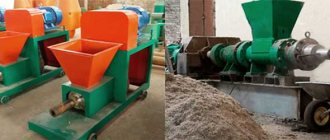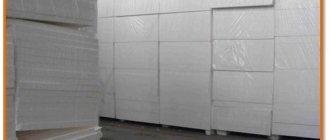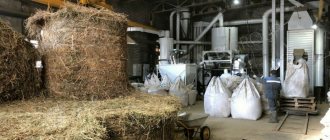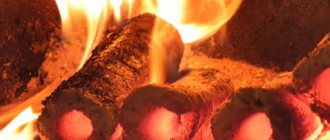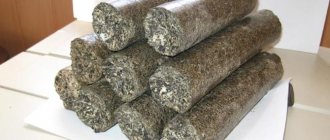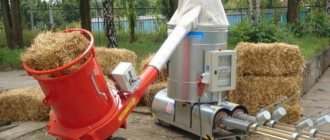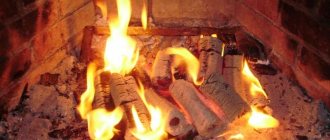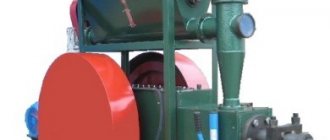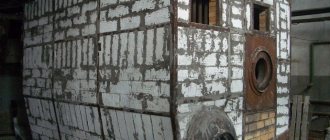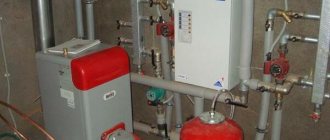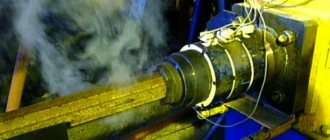In addition to the natural biomass that our planet is rich in, biomass of artificial origin grows on vast agricultural areas. These are cereals and other crops, after processing of which waste remains in the form of stems. First in European countries, and then in our country, they began to produce pellets and briquettes from straw to be used for heating buildings. The purpose of this article is to consider the technology for producing such biofuel, as well as the possibility and feasibility of its production at home.
Main advantages
Fuel briquettes are a modern type of alternative fuel.
They can be used in any stoves, fireplaces, boilers, grills, barbecues. Eurobriquettes are cylindrical billets resembling firewood, or rectangular bricks. Small dimensions allow them to be placed in fireboxes of any size. What are briquettes made from? Most often, wood is used (sawdust, shavings, dust), but straw, paper, peat, coal, seed or nut husks, and even manure are also used. The composition of eurobriquettes can vary significantly, depending on what technology is used in production.
At the same time, all types of raw materials from which firewood can be produced are natural, absolutely natural. Making fuel briquettes at home will allow you to create an environmentally friendly product that will burn almost completely in the furnace firebox and at the same time emit a minimum of smoke.
A home-made eurobriquette can be used to light a sauna stove or heat a home. Since the raw material is compressed quite strongly and the amount of moisture is minimal, the fuel briquette burns for a long time, constantly releasing a large amount of heat. An interesting point was noticed by people who are already actively using such fuel: if you heat your barbecue with eco-wood and fry food on it, if fat gets on the briquettes, it will not ignite.
For stoves, boilers and fireplaces that burn solid fuel, sawdust briquettes are an excellent option. They flare up slowly, but then burn for a long time and emit a large amount of heat. This is explained by the high density of the pressed wood product. The heat transfer from briquettes significantly exceeds the level of heat obtained from the combustion of even the driest firewood, the storage and drying of which took at least a year.
The humidity of fuel briquettes is 8-9%, dry firewood, in turn, has an indicator of 20%. It turns out that a briquette made from the same wood burns better than the wood itself. This effect is formed due to the fact that when burning, fuel briquettes do not need to evaporate a large amount of moisture.
The briquette burns with a stable fire, without splashes, sparks, or crackles, and the amount of smoke released during combustion can be described as small. It is extremely convenient to put such fuel into the stove, since all products have the same correct shape.
A little trick: if you want to create an intense fire with high heat transfer, you should place fuel briquettes in the firebox at some distance from each other and, conversely, to maintain smoldering, you need to tightly connect all the eco-wood in the firebox.
Like any product, fuel briquettes are not without their disadvantages:
- First of all, it is worth noting that they are very vulnerable to moisture, so they are sold in cellophane packaging.
- Briquettes are not able to withstand mechanical stress, especially products made using RUF technology that are not fired on the outside.
- If you want to start making such things at home, it will cost you a pretty penny, although there will certainly be benefits in the long run. The fact is that you will have to purchase a grinding installation, a dryer and a pressing machine in order to carry out the entire cycle of work with raw materials. With suitable equipment, it will be possible to set up artisanal production of fuel briquettes even in your own garage.
Types of wood briquettes
The following types of pressed sawdust are sold on the Russian market: RUF, Pini Kay, cylinder-shaped fuel blocks, including those made from coal and peat.
RUF
These briquettes are made from dried sawdust by pressing under high pressure. They are similar in shape to brick, and the color ranges from wood to white. The inscription RUF is embossed on the front and back sides of the product. It is convenient to load bricks into the combustion chamber; they are not afraid of moisture. There are quite a lot of manufacturers of this form of solid fuel, and the quality of the fuel depends on them, but for an average estimate we can point out that RUF briquettes are 1.5 times more economical than firewood.
Pini Kay
The most expensive type of fuel is made from sawdust. Briquettes are nicknamed "pencils" because of their octagonal shape. Holes in the center of the logs create additional draft, which increases their calorific value. The blocks were fired during the production process, which made them harder and drier, and the surface acquired a brown color.
Standard cylindrical briquettes
This variety contains non-toxic glue. Pressing takes place at low pressure. The simplicity of the production technology of cylindrical fuel briquettes makes them the cheapest on the market. At the same time, they are fragile and very afraid of dampness.
Simple cylindrical briquettes
The simplest fuel briquettes for heating stoves are also on sale - in the form of cylinders. They are made from pressed sawdust and small wood waste. All this is pressed under slight pressure using a non-toxic adhesive base, after which the finished bars are sent to consumers. This fuel is cheap, but has one distinct drawback - low strength. It easily disintegrates and crumbles and does not withstand exposure to moisture.
How to get biogas at home
What raw materials are biogas made from?
- Shredded weeds (grass and leaves).
- Fruit and vegetable pulp.
- Grape pomace.
- Seaweed.
- Waste from fish and meat processing.
- Potato peelings and rotten potatoes.
- Brewery waste.
But most often, manure is used for these purposes as a raw material that is quickly decomposed by bacteria and is cheap.
To obtain fuel from manure or other raw materials, a biogas plant is built. It works on the same principle as septic tanks for autonomous sewerage. Organic matter is processed by anaerobic bacteria, and the biogas released is discharged through pipes and collected for subsequent use.
Making a biogas plant with your own hands helps save about 50% of the cost of a factory device. This speeds up the system's payback. In addition, the construction of the simplest type of installation to begin with allows you to assess how necessary such a device is in the household and invest gradually. This is much easier for the family budget than paying the entire amount at once.
Application of pellets
The main purpose of pellets is combustion in boilers as a heat source. Widely used in thermal power plants with a capacity exceeding 500 Megawatts. The specific heat of this product is not inferior to dry firewood or even peat. Depending on what raw materials the pellets were made from, their energy intensity may vary.
We recommend reading: Heating schemes for a one-story house with forced and natural circulation, projects, do-it-yourself installation, instructions, photo and video tutorials, price
Application of pellets
The most commonly used raw material is sawdust, since it is available in sufficient quantities at all woodworking enterprises. The heat that can be obtained from their combustion is 4 kW/h/kg. This is enough to heat a small country house. In addition to heating, pellets are used as toilet fillers as a non-standard application. In fact, the scope of pellet application is very wide.
Fuel briquettes from sunflower husks for heating. Advantages and disadvantages
You can heat stoves and solid fuel boilers not only with coal or wood. Fuel briquettes made from agricultural waste are becoming increasingly popular.
For their production, husks (husks) of sunflower, buckwheat, rice are used, straw, nut shells, etc. are processed.
The features of modern technology are such that most often the formation of a fuel briquette occurs only due to pressure without additional connecting elements.
When pressing, one of the components is released from the raw material - lignin, which provides the strength of the briquette.
Fuel briquettes made from husks. Burns for a long time and produces a lot of heat
With all the variety of raw materials, briquettes made from sunflower husks are more popular. This is due to the large amount of heat that such fuel releases during combustion.
Advantages and disadvantages of husk briquettes
In addition to the large amount of heat, what is attractive about briquettes is their density. Why is this so good? Firstly, you save on delivery (they usually charge per volume).
Secondly, the more compact the fuel, the easier it is to store.
Thirdly, if you compare it with firewood, then when you put the same amount of firewood and briquettes (it’s unlikely that you measure firewood in kilograms, because they lay the boiler by volume, and they sell firewood by the cubic meter), you get more heat from the briquettes than from even the best firewood. According to VNII TP, the heat from burning 1 kg of sunflower husk briquettes can heat an area of 50 m2 within 1 hour.
In the table below you will see how much heat the fuel produces. It must be said that fuel briquettes are far from in last place, but those made from husks are practically beyond competition.
| Fuel | Specific calorific value, MJ | Specific calorific value, kW/h |
| Pine firewood | 8,9 | 2,47 |
| Oak firewood | 13 | 3,61 |
| Birch firewood | 11,7 | 3,25 |
| Sunflower husk briquette | 18,09 | 5,0 |
| Straw briquette | 14,51 | 4,0 |
| Wood chip briquette | 17,17 | 4,7 |
| Coal (W=10%) | 27,00 | 7,5 |
| Brown coal (W=30…40%) | 12,98 | 3,6 |
It’s convenient to place briquettes in the firebox: their surface is smooth, you won’t get splinters, unlike firewood, and you won’t get your hands dirty, like when working with coal. There is another advantage: there is no need to improve or remodel the boiler. Did you burn with wood? Just buy briquettes and use them instead of firewood.
Another advantage of briquettes made from sunflower husks is the burning time: they burn for one hundred to one hundred and thirty minutes, and smolder for six or even eight hours.
A significant plus is the low ash content: after burning a kilogram of this briquette, only a matchbox of ash or a little more remains (depending on the quality, but for normal briquettes the ash content is in the range of 4-7%), hence the large amount of heat that a unit of fuel produces: it burns out it's complete. The ash formed after combustion is an excellent fertilizer and can be taken out to the beds.
Cylindrical briquettes from sunflower husks. They endure transportation worse, but burn well
Now about the disadvantages. There is essentially only one drawback: any briquettes (including those made from husks) are afraid of moisture and can crumble when wet. Therefore, they are demanding in terms of storage space: they must be hidden under a roof, in a dry room.
The high price is often cited as a disadvantage. If you look at the cost per kilogram, the price is really considerable. But if you calculate the cost of one kilowatt of energy, the picture turns out to be different.
Want to make sure? Find out the price of a kilogram of firewood, coal, briquettes, etc. Divide this value by the number of kilowatt/hours from the table. Get the cost per kilowatt of heat for each type of fuel.
You may come across the opinion that fuel briquettes of sunflower husks clog the chimney because they contain a lot of oils.
If it is not designed correctly or is faulty, it is possible.
If there is normal draft, the boiler works no worse than with wood and the chimney does not need to be cleaned more often.
Production
The production process, as we have already said, is quite simple, even though it takes place at home.
To make briquettes for heating stoves with your own hands you need:
- Prepare high-quality raw materials, grind them to the desired consistency, and dry them. In order to improve the quality of combustion, paper can be added to any raw material.
- If necessary, add a binding element (clay, lignin), add water, and load it into the press machine.
- Press the product into a suitable shape at high pressure and preferably high temperature.
- Dry the finished product and, if possible, package it to protect it from external factors. When drying, you can use rags and paper that can draw out any remaining moisture from the briquette.
Having carried out all this work, you will receive excellent fuel, which can be used to easily and quickly heat a bathhouse and heat a house. At the same time, over a long period of time, you will experience the benefits and cost savings from using such eco-drives.
Note that during operation you should try to achieve a briquette moisture content of no more than 10-12% so that they burn well. Industrially produced briquettes have a moisture content of less than 10%.
To make sure of the excellent characteristics of this type of fuel, you can buy yourself some Euro briquettes to try in any store. At the same time, to create a suitable atmosphere, you can sometimes light a fireplace or stove with ordinary wood, because the use of different types of fuel is not mutually exclusive.
Back in the middle of the last century, in many regions of our country, where there were problems with wood, but livestock farming was developed, dung was a popular type of fuel. Then they were supplanted by coal supplies and gasification, but the topic of producing fuel briquettes from manure is still interesting.
Nowadays, manure is most often used in organic farming, as a natural and useful fertilizer. But these are not all areas of use of this natural raw material. We talked about adobe houses, where manure can also be used as a filler for construction briquettes. In addition, organic material is used in the production of biogas, which is also an alternative fuel.
Preparation of dung. Tsimlyanskaya village, 1875–1876
But we will not talk about biogas, but specifically about fuel briquettes made from manure, dung, which were actively used by our ancestors to heat houses with stove heating.
Dung is not just manure, animal waste. This is manure mixed with straw, sawdust, hay, pressed into small briquettes, bricks or cakes, and dried. In this form, manure becomes a good fuel for heating, for example, a greenhouse, a bathhouse or a country house, completely replacing firewood and even coal.
For comparison, here are the approximate energy content of various types of biological fuel:
| Fuel | MJ/kg | kW h/kg |
| Dry manure | 16 | 4,4 |
| Fresh wood with 60% moisture content | 6 | 1,7 |
| Street-dried wood with a moisture content of 20%, ordinary firewood | 15 | 4,2 |
| Straw in bales | 15 | 4,2 |
| Coal | 28 | 7,8 |
As you can see, the specific calorific value of dry manure is even slightly higher than that of firewood that was dried outside. In addition, dung burns with a smoldering flame; users note that their combustion properties are similar to brown coal.
The main advantage of manure as an alternative fuel is its efficiency. If you have your own farm - cows, goats, sheep, rabbits, other animals - then the fuel is absolutely free. You can ask your neighbors who farm and do not actively use manure themselves. A whole truck of manure can be ordered and purchased; it will cost about 11 thousand rubles.
Another plus is that ash from dung will be an excellent fertilizer; it is an environmentally friendly and waste-free fuel.
The main disadvantage of dung is that it takes a long time to make such fuel with your own hands; you have to put in a lot of effort. In addition, the very thought of having to tinker with such organic raw materials, animal feces, scares many people away. Note that, according to numerous reviews, there are no unpleasant odors during the burning of dung. Bread was previously baked in Russian ovens using this fuel.
In the process of producing briquettes from manure, of course, there is little pleasant, we agree. But in general, everyone involved in livestock farming is faced with the disposal of organic waste, so why not do it for the benefit of the farm.
Collection and preparation of straw for boilers
When developing a scheme for producing energy from straw, it is necessary to take into account the seasonality of obtaining this fuel source. Winter crops (barley, wheat, oats, oilseed rape) are harvested from July to September, so straw will also be available during this period. And when growing spring crops, it can serve as fuel from late August to early November.
Straw is baled using balers (balers). Typically, bales are made in two shapes - round and square. Square bales are more suitable for transport over longer distances because they can be nested more closely. Therefore, when you choose a baler for the needs of your farm, you need to take into account the strength of its pressing: the higher the density of the bales, the better. This will reduce the cost of transporting bales. The length of straw cutting is also of great importance: the shorter it is, the better. And, of course, the straw must be dry.
The most common way to collect straw is in round bales. But for its transportation this is not the best option. To transport it, it is better to use square bales.
Different types of balers are used to collect straw. Telescopic loaders are very convenient for loading straw.
The logistics of straw consists of its transportation to the farm for further storage and production of pellets or off-farm transportation, that is, directly to the user. The closer to the place of straw production the heat generator in which this straw is burned is located, the cheaper the logistics will be. For long distance transportation, it makes sense to make straw pellets.
Thus, a standard straw transport truck can accommodate between 25 and 40 tons of baled straw, making such logistics quite cost-effective even when transporting over long distances.
Equipment used
In order to make a fuel briquette with your own hands, you need to choose the right press or chipper. When choosing a press, you need to decide what shape and area the elements will have. The most commonly produced are round and rectangular briquettes.
Professional equipment includes auger, mechanical impact and hydraulic presses. The first device is capable of producing octagonal elements with a small hole in the center. They are distinguished by maximum density, therefore they provide the longest burning time. The hydraulic press produces rectangular elements with the lowest density, which ensures high material consumption. Making fuel briquettes at home using a mechanical impact device gives you the opportunity to make material of any shape. In this case, the elements have an average density.
You can make a machine for making briquettes at home. To do this, you will need a simple press and a mold (a sewer pipe with drilled holes). Please note that during the manufacture of the presented product you will need to take into account the length of the firebox.
Pricing and determination of retail or wholesale prices for briquettes
Different businesses use different pricing methods. However, regardless of the method chosen, you must first have certain information that will allow you to make the right decision. The most important information for pricing is:
- acceptable price level for buyers;
- competitors' prices;
- expenses for the cost of finished products;
- other expenses: advertising, delivery, company management.
Much of this information for determining sales prices comes from market analysis. First you need to answer the question: “What price is the buyer willing to pay for the product?” Next, we determine at what prices competitors sell. And then we analyze the costs of producing and selling briquettes, which should be covered by the selling price:
- Direct purchasing costs are those costs that can be directly associated with each batch of purchased materials and raw materials for production. They can be attributed to a person without any additional calculations for products including them: purchase of raw materials, fuel, transportation, packaging.
- Fixed costs – carrying out operations is also a fixed cost that does not depend on the number of goods sold. This includes wages (if you hire workers), overhead, electricity, waste removal, financial and accounting services, insurance, security and controls, telephone and internet, office supplies, promotions and advertising, and office rent.
For one ton of straw briquettes, individual clients are willing to pay up to $120. Enterprises and large boiler houses count on wholesale discounts of up to $80 per 1t.
Despite the relatively new type of solid fuel, there are already many competitors on the market today. Some of them produce briquettes from sawdust or willow branches
Therefore, it is important to stand out among competitors with a high-quality product with good combustion and heat transfer performance. It is equally important to regularly analyze the degree of customer satisfaction in different market segments, which are constantly changing
To solve these problems, you should know how to conduct marketing analysis for small businesses. Market analysis will not only allow you to track undervalued segments, but also create a strategy for business development in accordance with the growth rate of its potential. And also to identify the most favorable entry point into the market.
BUILDING A BUSINESS STRATEGY FOR ORGANIZING PRODUCTION AND SALES OF BRIQUETTES
When organizing the production of straw briquettes, you should analyze the current market situation and the conditions under which you will have to work. What are the pros and cons, strengths and weaknesses of a manufacturing enterprise. What should be taken into account to scale a business, and what are barriers and obstacles to the development of the project (all kinds of threats to the business). This type of production has an indisputable trump card - the production of energy from renewable raw materials. The chances of success are high, but the challenges and obstacles have not been canceled. Factors that will positively hinder the achievement of business success should be taken into account. To create a successful business, follow a number of effective steps:
- Creating a profitable offer while maintaining affordable prices.
- Organizing the supply of straw in sufficient quantities at low prices.
- Searching for regular customers from other regions and areas.
- High-quality equipment for the production of high-quality briquettes.
- Training of hired workers or search for qualified employees with skills and experience in the production of briquettes.
- Cooperation with organizations and institutions in the field of environmental fuels.
- Increasing public awareness by attracting more interest in the use of environmentally friendly fuels.
- Positioning the product as an alternative to minerals in the energy sector.
- Obtaining support for any funds allocated for special programs to protect the environment.
- Investment in the economic development of the region and the creation of new jobs.
The most likely difficulties and obstacles that you will most likely encounter when starting this manufacturing business:
- Poor visibility of the product in the residential heating fuel market.
- Insufficient number of regular customers.
- Interruptions in the constant supply of industrial raw materials.
- Insufficient production capacity.
- Rapid emergence of competitors and new participants in your market.
- Insufficient project funding.
- Risks associated with the development of new customer needs.
- Variability of legislation and taxation rules in this area of production.
- Unstable government policy towards small and medium-sized businesses in general.
- A sharp decline in the purchasing power of the population due to financial crises.
It is important to predict customer expectations in advance and satisfy them the first time they purchase a briquette.
Segmentation of buyers of briquetted fuel
Customer expectations will be shaped depending on their type:
- Individual clients (individuals) will expect a high quality product, and for them this means a high calorie content (density) from an appropriate degree of compression (without crumbling or delamination of the briquette). The form of packaging is also important to them: convenient paper bags of 10 kg for barbecue dressing. Or large bags like big-bags with a total weight of up to 1000 kg for heating needs.
- For large boiler houses, the wholesale price will be primarily important. High density indicators after pressing to the maximum degree are also important for them. Packaging is not important; they are always ready to receive briquettes in bulk.
Customers' opinions
How objective can reviews of peat heating briquettes be? The catch lies in the many external factors that affect the effectiveness of their use. First of all, this concerns the boiler, since the efficiency of heating with briquettes made from sawdust or other source material depends on its parameters:
- We decided to heat the boiler with sawdust briquettes as an experiment. The heat transfer turned out to be extremely high. However, fuel consumption has also increased. Alas, our old boiler had too much draft. Now we use them if we need to quickly heat the house;
- First, we ordered the cheapest fuel briquettes in the form of tablets. They burned out quickly and produced a relatively large amount of ash. Then we decided not to save money and bought a batch of RUF Euro firewood. The differences turned out to be significant - the complete combustion time increased, heat transfer increased;
- We approached the issue of heating the house thoroughly - we purchased a long-burning boiler. They took peat fuel briquettes for testing. After much testing and experimentation, we found out that it is best to use them together with firewood in a 1/3 combination (briquettes, firewood).
The video shows a homemade installation for making fuel briquettes:
Why Eurowood is gaining popularity
When deciding to use a gas system for heating, a number of problems arise that not everyone can solve. But the upcoming disadvantages cannot be ignored. To ensure proper operation of a gas boiler, it is necessary to have a uniform, constant supply of electricity, as well as quite a lot of funds. For the safe operation of this system, it is also necessary to build a chimney in the room to remove unnecessary gases, but the room itself should be regularly ventilated
Not every such boiler can survive harsh winters, so when purchasing it is important to consider the degree of frost resistance
If we talk about wood heating, it requires a large amount of material due to its low efficiency. When using this method, a lot of wood is wasted, as a result of which nature suffers. Firewood also needs to be stored well, otherwise nothing will come out of raw or rotten raw materials. A person without experience may not be able to cope with such a task, so some even resort to the help of a stoker and a firewood harvester.
Coal heating requires the use of high-quality raw materials, for which a lot of money has to be allocated. Maintenance of a heating installation includes many stages of dirty work: you need to remove soot, ash, and soot. The use of coal leaves a lot of black dust, which can make it very difficult to keep your home clean.
To avoid such difficulties, you can use fuel briquettes. At the moment, there are not many factories producing eco-wood in the Russian Federation, but this material is becoming popular. This can be explained by the fact that the effect of its use comes faster, so the consumption of raw materials is lower.
DIY heating briquettes
Is it difficult to make wood heating briquettes at home without special equipment? To do this, you will need the simplest lever press and a mold for Euro firewood.
Sawdust or waste paper can be used as feedstock. Often these components are combined with each other to improve quality. To obtain a homogeneous mass in a peat heating briquette, a binder component is required. It could be water or clay. Then you will need to complete the following manufacturing steps:
- Crushing the feedstock and adding a binder component.
- Filling the form, pressing.
- Drying the workpiece.
Factory heating briquettes RUF are produced using the same technology. The difference lies in pressure and production volumes. At home, to provide fuel for the entire heating period, production time can take from 7 to 20 days.
Market situation
It is for heating houses that fuel briquettes have become especially popular, since the heat from their use will be much more pleasant than the heat coming from coal or natural gas. The great demand for European firewood is growing strongly, but there are no prerequisites for the modern market to become oversaturated with such products. In the Russian Federation, the market for such material is already actively gaining momentum. Many people who buy country property are well aware that it is possible to heat their purchased homes using wood waste boilers and fireplaces. So the equipment is purchased with great joy. And in Europe, heating homes using fuel briquettes is already commonplace. Many supermarkets may sell different packages of granules of varying sizes.
Sales market for fuel briquettes
And yet, fuel briquettes are perfect for use in production facilities. Every factory that uses solid fuel for heating may well end up switching to fuel briquettes. Thus, the business plan for the production of fuel wood briquettes will be more profitable.
Market analysis
The rapid development of the biofuel market is associated, first of all, with the energy challenges that exist in European countries and the significant rise in cost of traditional fuels. In Russia, interest in the production of fuel briquettes began to appear at the turn of the 21st century, when the country's first pallet manufacturing enterprises were organized. In 2004, the biofuel industry formed into an independent business line, which in recent years has undergone a number of significant structural and qualitative changes.
If at the initial stage of the development of the industry in the country there were only about 30 active manufacturers, and of these only 3-4 trading companies were able to enter the international market, now their number has not only increased significantly. Industry magazines and reference books appeared in Russia, and conferences and seminars began to be held on topical issues in the development of the alternative fuel market.
These efforts have led to the fact that since 2002, the number of European firewood producers has doubled every year. According to experts, this trend will continue in the future. This happens even under such conditions that domestic enterprises for the production of briquettes constantly experience a shortage of raw materials. If this fact in itself is paradoxical for Russia, then other restraining barriers are quite natural: the country does not yet have an established production of special equipment, there are no qualified specialists, and the entrepreneurs themselves have a lack of experience in operating in this product market.
The consequence of all these circumstances is a constant rise in price (by 5-80%, depending on the region) of purchase prices for fuel briquettes.
Abroad, Russian products from this industry cost 80-230 euros per ton. This is facilitated by the gradual accumulation of experience in the industry market by domestic entrepreneurs, the widespread popularization of this type of fuel among the population, the high profitability of the production itself (at least 15%), and the active investment of funds from foreign companies in the domestic industry.
At the moment, the colossal potential of domestic bioenergy is undeniable. But, according to experts, for continued market growth, two basic conditions must be met:
- It requires a transition from competition between domestic producers to cooperation, which will lead to the exchange of experience and knowledge.
- Government support for the industry is needed.
To date, certain steps have already been taken in this direction. Thus, the Federal Energy Strategy for the period until 2022 was adopted, which provides for the creation of a more favorable investment climate for producers of renewable energy sources, the widespread introduction of modern technologies for the production of biofuel, and the organization of production of domestic equipment for this industry.
It is expected that as a result of the implementation of this strategy, the share of renewable energy sources in the country's fuel and energy complex will reach 0.6% in 2022 (in European countries this figure is going to be increased to 15%). There is a special commission in the State Duma of the Russian Federation that is developing draft laws in the field of alternative energy.
In a word, bioenergy in Russia has the necessary prospects to soon become a developed, environmentally friendly, competitive and profitable sector of the national economy. In the foreseeable future, the demand for fuel briquettes will only increase, which will lead to increased competition and the survival of only efficient manufacturers in the market, the number of which will also grow.
How briquettes are made in large companies
As already mentioned, briquettes are made from waste from production processes. The first most popular use is wood (and/or sawdust); The hottest material is oily cereal crops. Large-scale production lines (conveyor lines) require several processing steps. And each stage, in turn, requires certain equipment, namely:
- Grinders – crumble raw materials to the required size. The smaller the individual piece, the denser the briquette will be made, therefore, the more heat it will produce.
- Calibrators “select” from a huge variety of crushed parts those that should go through the first stage additionally.
- Drying chambers - the raw materials obtained at this stage have high humidity, which, of course, is in no way suitable for ignition. The purpose of the chambers is to reduce the moisture level to the required level.
- Press – compresses crushed and dried raw materials.
- Packaging machine – completes production by wrapping the briquettes in cellophane, thereby providing protection from outside moisture.
Preventing problems
If the briquettes were made in accordance with the technology, they only need paper and a few twigs to ignite. They burn evenly, with equal intensity, producing large volumes of thermal energy when air is supplied. For the same reason, lovers of bathing procedures, who are accustomed to heating stoves with logs, quickly render them unusable by burning briquettes.
Compared to sawdust bricks, charcoal briquettes burn even hotter. They provide a temperature of 900°C versus the 700°C produced by sawdust. This is why they are not suitable for steel ovens. The latter are intended only for wood.
Recently, briquettes have begun to be produced everywhere. There are many unscrupulous manufacturers. They use almost any material they can get their hands on to make cheap fuel. It is not surprising that already at the transportation stage these materials crumble into dust. Homeowners can only wonder why low-quality fuel produces so little heat and leaves impressive amounts of ash. It turns out that when purchasing, you should never look for the cheapest options, as there is a risk of stumbling upon low-quality raw materials.
Boilers for burning straw bales
A number of straw boilers have been developed that are insensitive to more aggressive effects on the surface of heat exchangers due to the complex chemical composition of straw and burn it well. In particular, there are those that are equipped with fans, and thanks to this they provide control of the air supply. Straw boilers can be used to produce heat on farms and also for district heating. The fuel for them can be straw in the form of cut straw, pellets (pellets) or a whole bale - depending on the technology to which the boiler design is adapted.
In addition, when using gas for drying grain, certain risks should be taken into account: interruptions in the supply of this type of fuel; increase in gas prices (for example, compared to 2013, its price in dollar terms has tripled); supplies of diluted and low-quality gas; huge costs for obtaining permits and work on installing a gas supply system. But there are no such risks for using straw to dry grain. Thus, taking into account today's market conditions, the capital costs of supplying and installing gas equipment for drying grain in an agricultural company significantly exceed the costs of similar equipment intended for burning straw.
A significant amount of straw is potentially available for use in energy production.
For straw combustion, the market offers a range of boilers/heat exchangers/burners specifically designed for the use of biomass.
It is technically possible to burn straw in several forms (cuts, pellets/pellets, rolls/bales) depending on the combustion technology and the design features of the boilers.
Organization of the straw preparation process
Now we will give some considerations on organizing the straw preparation process. Unlike sawdust, at the initial stage of processing we have straw in bales or rolls. At the same time, the density of the baled material is significantly lower than the density of sawdust. This allows you to use a different method of drying raw materials in contrast to drying sawdust. The most efficient way is to dry the straw directly in the bales. In this case, you can use simple chamber dryers similar to wood dryers. Considering the possibility of using a hard drying mode, it is possible to use a dryer of the simplest design without special equipment and automation. According to our estimates, the productivity of such a dryer will be very high, and the costs of its creation are not comparable with the costs of purchasing a good drying unit for sawdust. After drying, the straw must go through the stages of cutting and crushing
There is one more circumstance that should be noted. Considering that straw is harvested mechanically, soil particles are present in the baled straw. During processing, this abrasive will have a negative impact on the working tool of the press. To eliminate this drawback, there are two solutions: - radical - using a centrifuge to separate the abrasive from the crushed raw materials; - use of a special tool. Considering the productivity of the press, you need to prepare up to 9 tons of raw materials prepared for pressing per day
Hence the required volume of the drying chamber. Of course, dryers used for sawdust can also be used to dry chopped straw. Otherwise, the process is similar to the production of briquettes from sawdust. Equipping the process with mechanization means, organizational decisions and layouts depend on the specific conditions and capabilities of the manufacturer
During processing, this abrasive will have a negative impact on the working tool of the press. To eliminate this drawback, there are two solutions: - radical - using a centrifuge to separate the abrasive from the crushed raw materials; - use of a special tool. Considering the productivity of the press, you need to prepare up to 9 tons of raw materials prepared for pressing per day. Hence the required volume of the drying chamber. Of course, dryers used for sawdust can also be used to dry chopped straw. Otherwise, the process is similar to the production of briquettes from sawdust. Equipping the process with mechanization means, organizational solutions and layouts depend on the specific conditions and capabilities of the manufacturer.
We declare with full responsibility the possibility and necessity of widespread implementation of the technology for the production of fuel briquettes from crop waste. This technology allows us to solve the problems of recycling unclaimed waste and produce highly efficient environmentally friendly fuel from renewable sources of raw materials.
Combustion of baled straw in special fireboxes
There is currently more and more talk about the merits of such raw materials as fuel. In this case, first of all, this means burning baled straw in special fireboxes, which has certainly been implemented in practice in a number of countries. This method of straw disposal also has significant disadvantages. These include:
- the high cost of combustion installations, which reduces the versatility of such fuel for different consumers;
- low efficiency such installations, including due to the low density and humidity of the burned raw materials;
- inconvenience of use due to the large dimensions of the fuel and, accordingly, problems associated with its delivery to the consumer and storage of raw materials in large volumes.
